Question
From the 400s AD through the early Renaissance the majority of art in Europe was rooted in Christianity. Beginning with the Renaissance art becomes more secular. This shift resulted in a tension between the authority of the Catholic Church and secular European Monarchies. What does the shift from religious to secular art reveal about political, intellectual, and cultural changes in Europe?
Note: For clarity, the time span for this topic is the mid-1400s through the mid-1800s.
Instructions:
Consider three of the following issues:
- The transforming power structure of Europe (Church vs Kings)
- Intellectual challenges: The Scientific Revolution
- Intellectual challenges: The Enlightenment
- Globalization
- Growth of the middle class
- The Protestant Reformation
Select two art works that relate to the issue selected in number 1, and discuss how this work of art reveals the shift from the religious to the secular.Write approximately a page for each issue. Format your responses as a single cohesive paper with an introduction that introduces your position on the topic as well as identifying the three selected eras, and a conclusion that satisfactorily concludes your analysis of the topic.
Answer
The Shift from Religious to Secular Art
In the early period, the church played a critical role in shaping art. Christianity was so influential that almost all works of art focused on religion. During the renaissance, a gradual change occurred in the works of art, whereby it became increasingly secular in form. Artists began increasingly making secular art forms, while abandoning the traditional Christianity-inspired art forms. This paper is an evaluation of the shift from religious to secular art forms during the Protestant Reformation, Scientific Revolution, and the Enlightenment periods.
Intellectual Challenges: The Scientific Revolution
Sandro Botticelli’s Birth of Venus
The scientific revolution is a period lasting between 1543 and 1700. The scientific revolution was a period marked by new methods and ideas of conceptualizing the natural world – a radical shift from the traditional Biblical interpretation of the natural world and the heavens. One of the notable works of art during this period is Sandro Botticelli’s Birth of Venus of 1480, a classical mythology painting depicting the birth of the Roman goddess of love (Emeritus, Frank, & Preble, 2014). The painting depicts the Roman goddess of love in the center, and naked. This is one of the paintings inspired by secular thought during this period. It is worth noting that prior to this period, most arts of work depicted Biblical characters or stories, for instance, the Last Supper. According to Emeritus, Frank, and Preble ( 2014), “to place a ‘pagan’ goddess at the center of a large painting, in a position previously reserved for Virgin Mary, was novel” (p. 283). Botticelli’s art on classical mythology was inspired by Neoplatonist philosophy, which focused on empirical facts. The art was business-oriented; it had little to do with the church or Christianity.
Fig. 1.1 Sandro Botticelli’s Birth of Venus of 1480
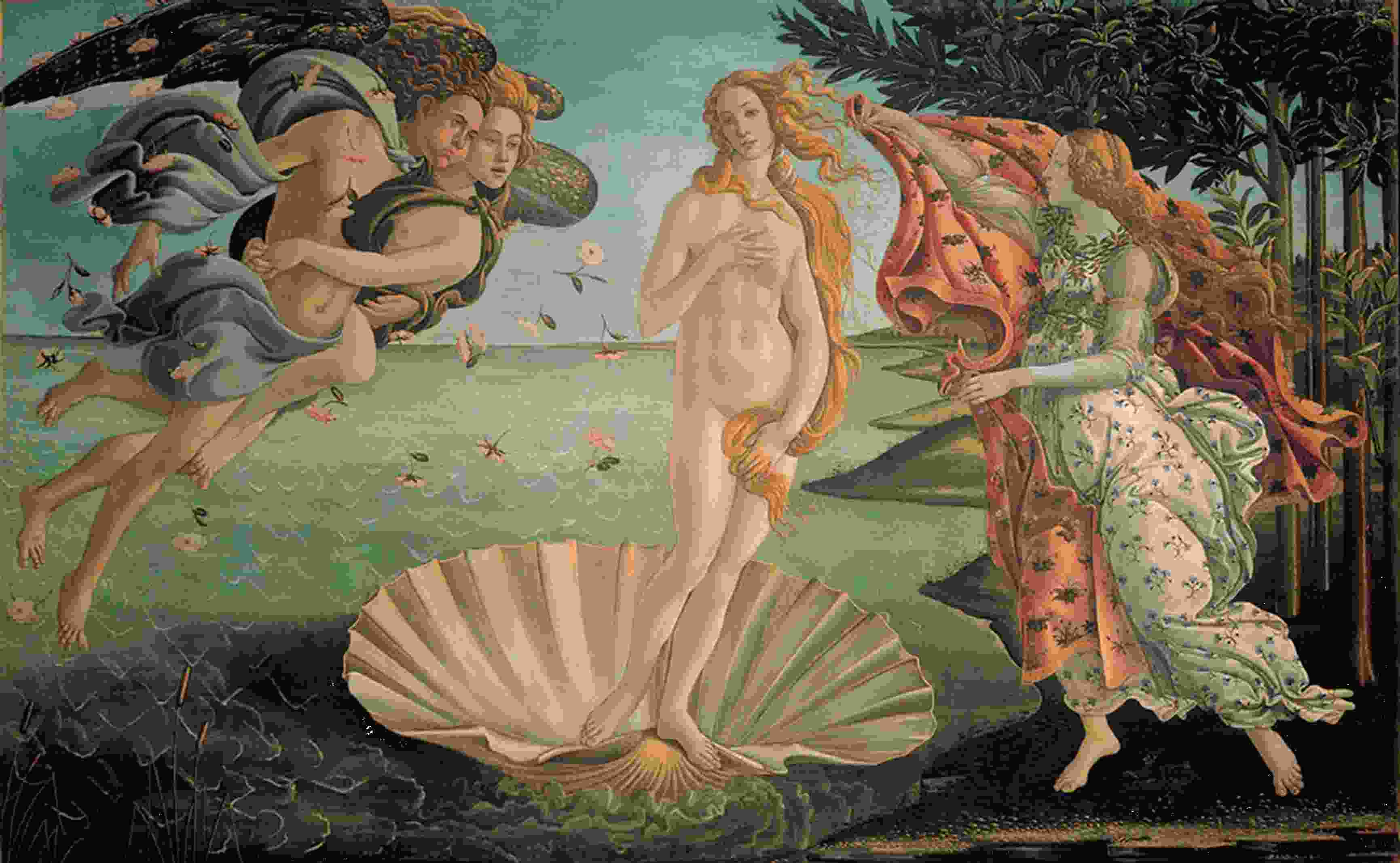
Leonardo da Vinci’s The Fetus in the Womb
The sixteenth century saw an increase in curiosity in the study of human anatomy. During this period, the study of human anatomy became a major focus for scientific inquiry. Scientists and artists began interpreting nature based on what they observed, rather than basing their interpretations on religious dogma (Laurenza, 2012). This led to the emergence of new forms of art inspired by the combination of Christian theology, Greek philosophy, and the then current scientific thoughts (Emeritus, Frank, & Preble, 2014). A work of art that reflects this is Leonardo da Vinci’s The Fetus in the Womb. This work of art is a drawing of a fetus by da Vinci in 1510. The work represents the growing interest in human anatomy, which was one of the key subject areas during the scientific inquiry. The drawing shows the ability of humans to develop a deep understanding of the body.
Fig. 1.2 Leonardo da Vinci’s The Fetus in the Womb of 1510
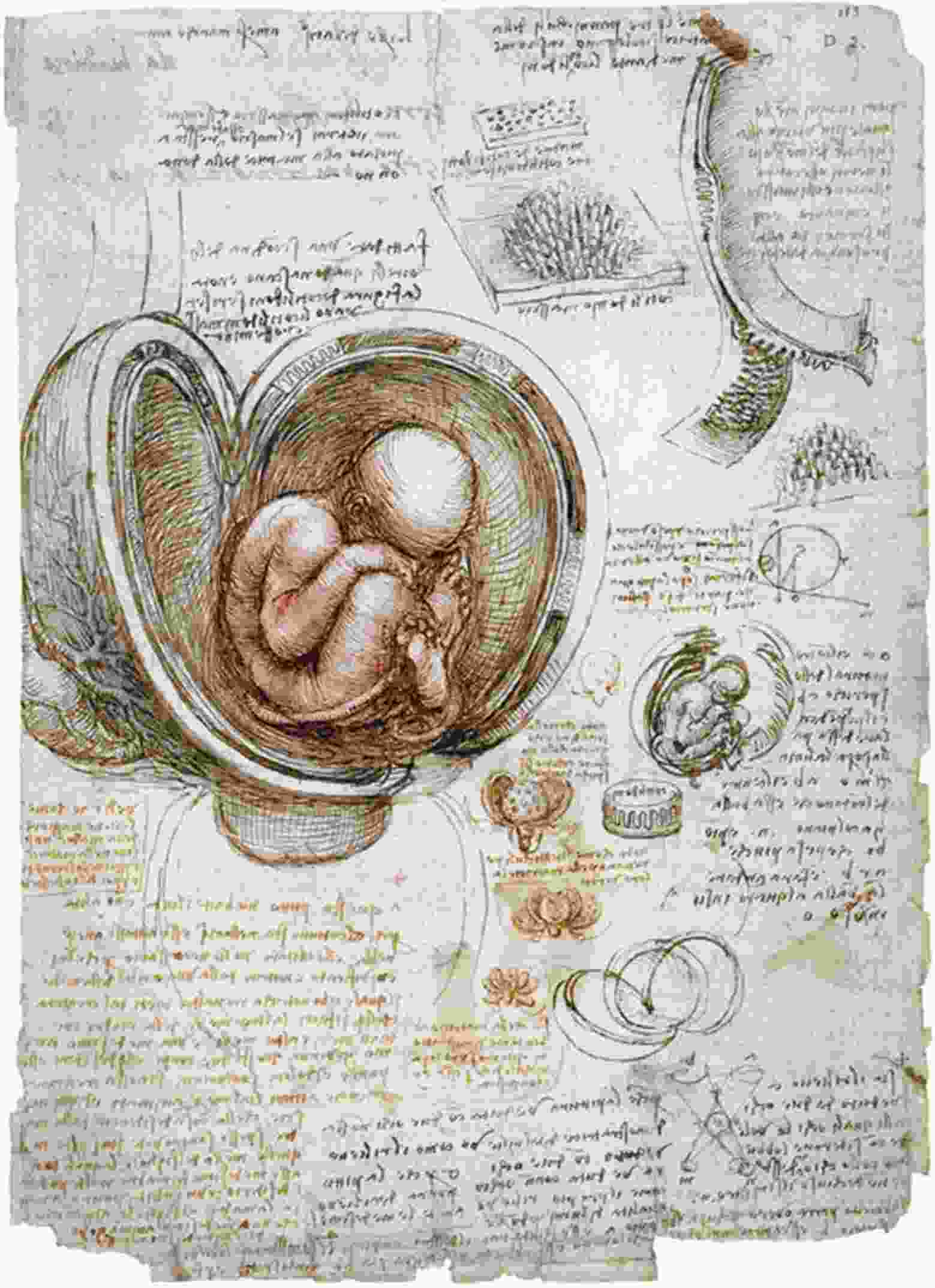
Intellectual Challenges: The Enlightenment
Joseph Wright of Derby’s A Philosopher Gives a Lecture on the Orrery
The enlightenment is the period roughly between 1700 and 1815. Art during the enlightenment period reflects a radical shift from religious to secular viewpoints. Derby’s painting clearly reflects the shift from a religious focus to a scientific focus of the natural phenomena. The painting shows an orrery; one of the earliest models of the solar system (Emeritus, Frank, & Preble, 2014). At the center of the orrery is a lamp, which takes the place of the sun. The lamp gives off light making the shadows of the orrery fall upon those listening to the lecture. This painting represents a complete shift from the earlier Christian thought to a more scientific approach. While the church embraced the idea that the earth is the center of the universe, this scientific demonstration shows that the sun is the center of the universe. This is a shift from the religious interpretations to a more secular interpretation of natural phenomena.
Fig. 1.3 Joseph Wright of Derby’s A Philosopher Gives a Lecture on the Orrery of 1766
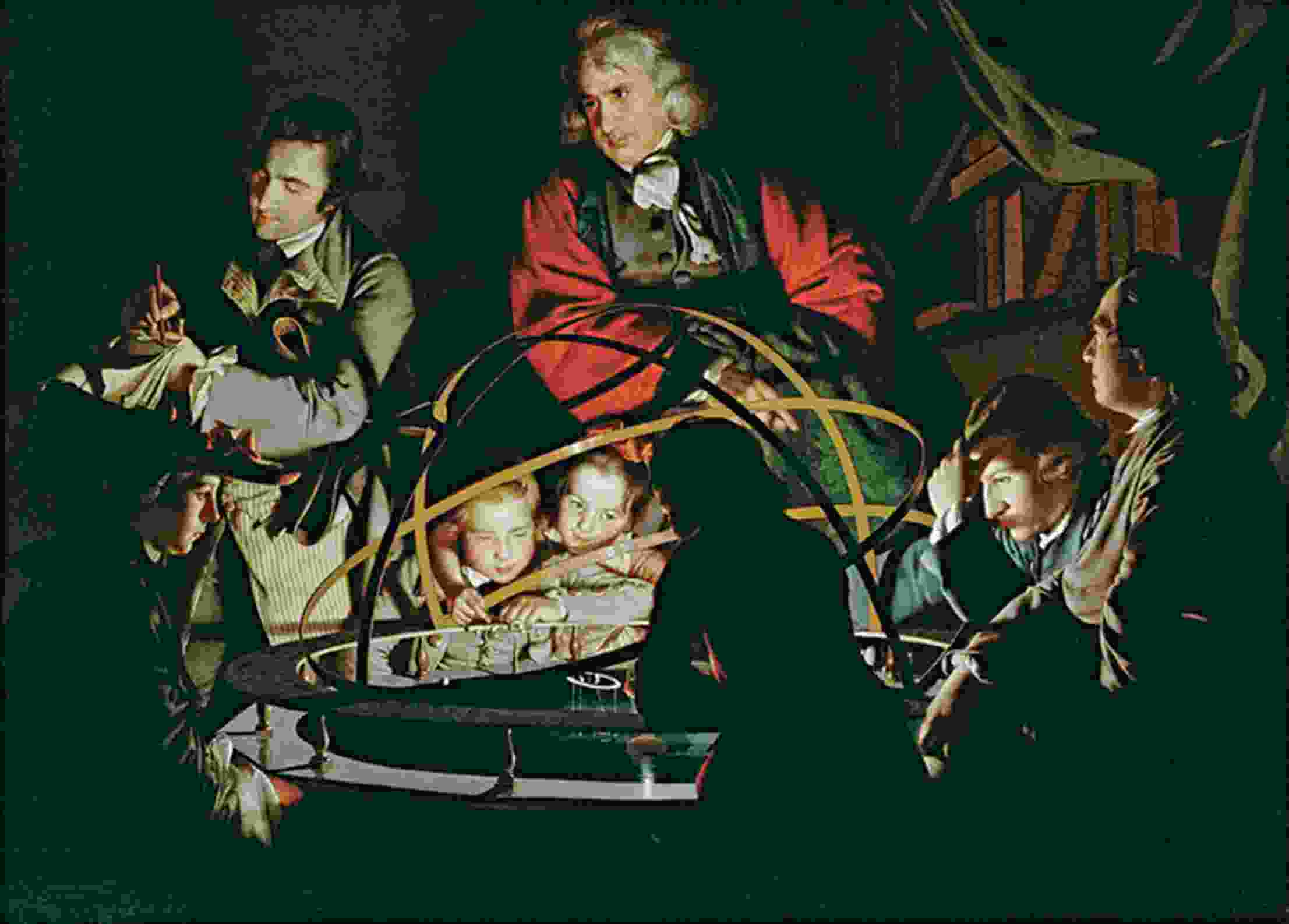
Jean-Honore Fragonard’s Happy Accidents of the Swing
This painting depicts the Rococo style of art (Emeritus, Frank, & Preble, 2014). The painting shows the shift from the religious to secular forms of art. The painting shows a well-dressed woman swinging. In the back is an elderly man giving the woman a push. A young man admires the young woman from a vantage point. The elderly man does not seem to realize there is young man hiding in the bush. The painting depicts sensuality, which is a major characteristic of secular art. The painting depicts courtship, happiness, and picnics (Emeritus, Frank, & Preble, 2014). This is not present in religious art, which mainly focuses on showing events in the Scriptures as they occurred.
Fig. 1.4 Jean-Honore Fragonard’s Happy Accidents of the Swing of 1767
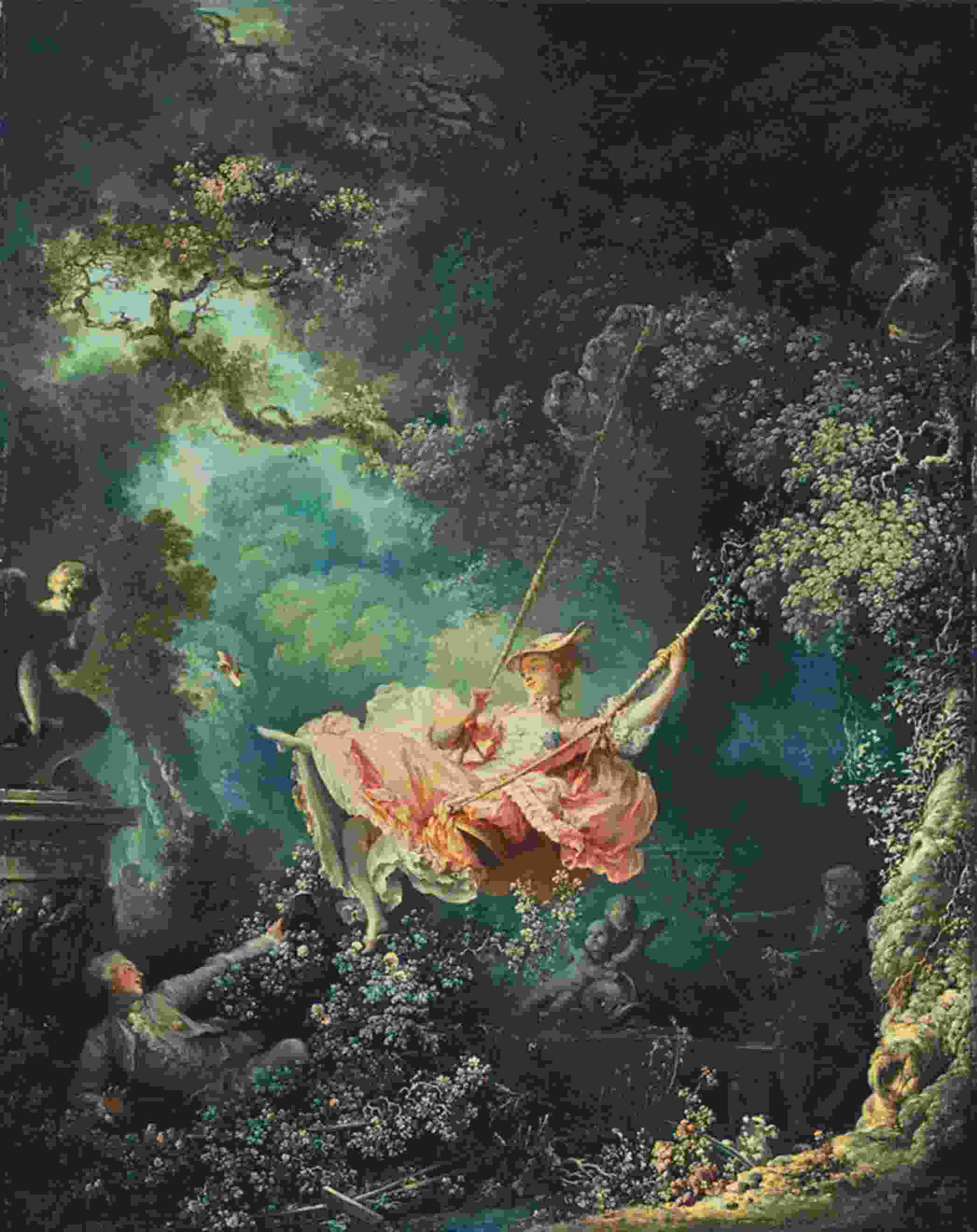
The Protestant Reformation
Pieter Bruegel’s Hunters in the Snow
The Protestant Reformation had significant impacts to northern Europe art. In 1521, Pope Leo X ousted Martin Luther from the Catholic Church due to growing divisions. The clergy in support of the Protestant Reformation called upon the church to abandon elaborate artistic decorations inside the church. This led to a significant decline in religious decorations (Emeritus, Frank, & Preble, 2014). In different ways, the Protestant Reformation led to the growth of secular art meant for use in homes. An example of this art is Bruegel’s painting, which focuses on the landscape and the everyday life of the common person. The paining shows hunters going about their business during winter.
Fig. 1.5 Pieter Bruegel’s Hunters in the Snow of 1565
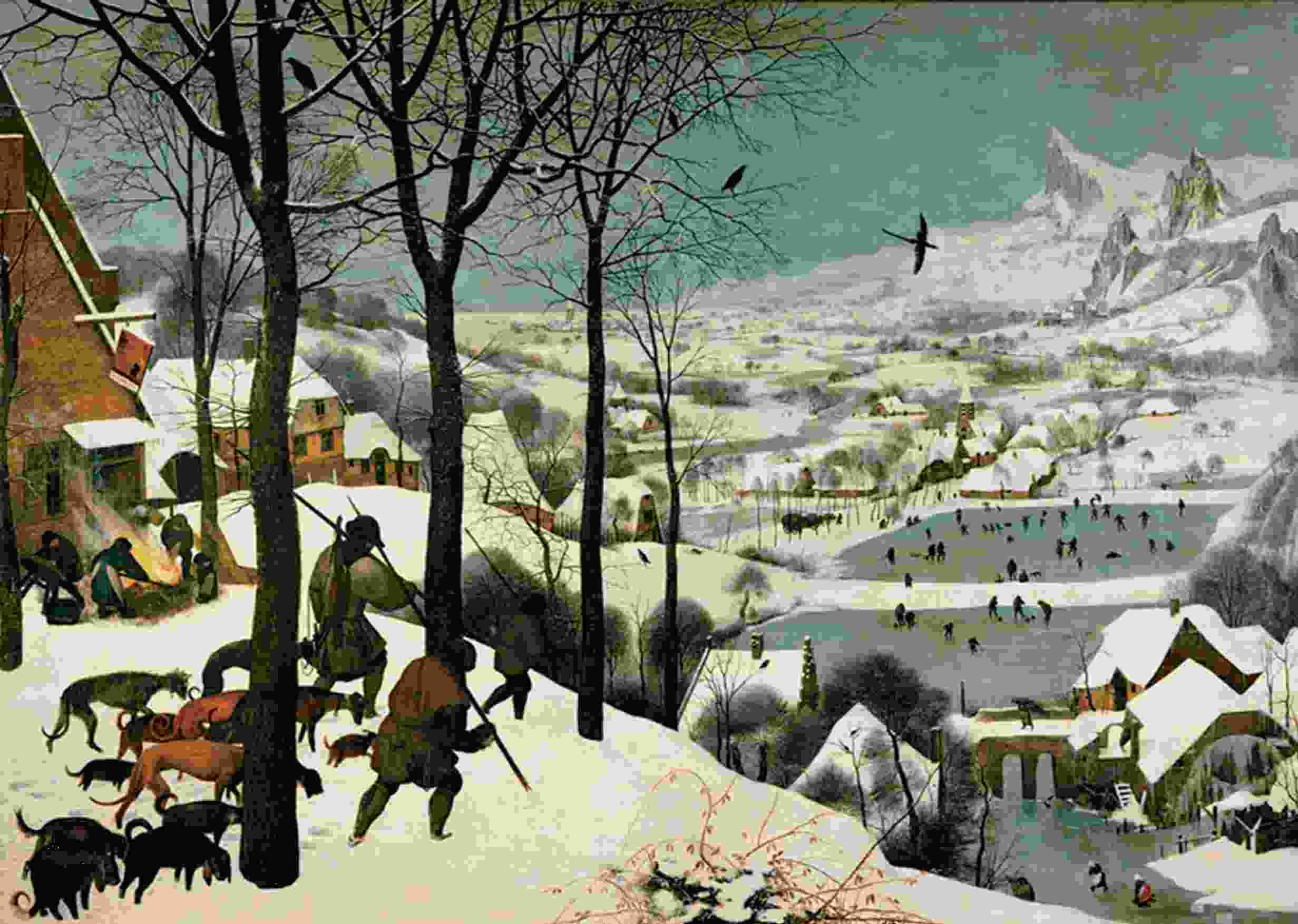
Paolo Veronese’s Feast in the House of Levi
This is another painting completed during the Protestant Reformation period. The painting was controversial because Veronese depicted “buffoons, drunkards, Germans, dwarfs, and similar vulgarities” (Emeritus, Frank, & Preble, 2014, p. 292). The painting suggested that all these sorts of people were present during the Last Supper. To justify his painting, Veronese claimed that as an artist, he was free to paint pictures in any way he desired. Veronese was ordered to rework the painting but he only changed to title from the ‘Last Supper’ to ‘Feast in the House of Levi’. This reflects a weakening of the church doctrines and its footing in the society.
Fig. 1.6 Paolo Veronese’s Feast in the House of Levi of 1573
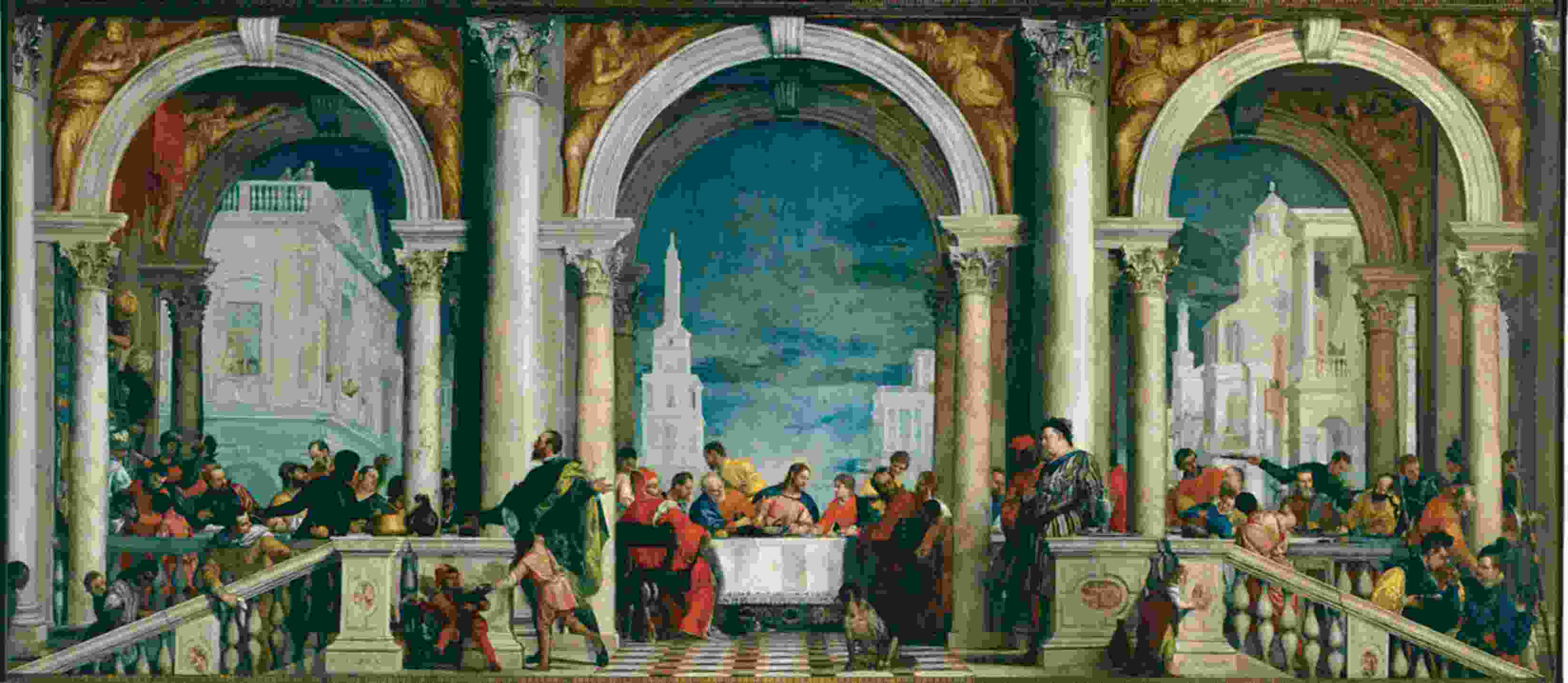
In summary, art has undergone radical changes since the early period to the modern period. The most notable change relates to a gradual shift towards secular ideas. The Scriptures inspired majority of art during the early period. During the Scientific Revolution, most artists combined Christian theology, Greek philosophy, and the then current scientific thoughts to develop their works of art. During the Scientific Revolution period, most artists began depicting scientific ornaments, equipment, or new knowledge. The period during the Protestant Movement saw an increase in secular art driven by Protestant influence.
References
Emeritus, D. P., Frank, P., & Preble, S. (2014). Prebles’ Artforms: An introduction to the visual arts (11th Edition). Boston. MA: Pearson.
Laurenza, D. (2012). Art and anatomy in Renaissance Italy: Images from a scientific revolution. New York: Metropolitan Museum of Art.